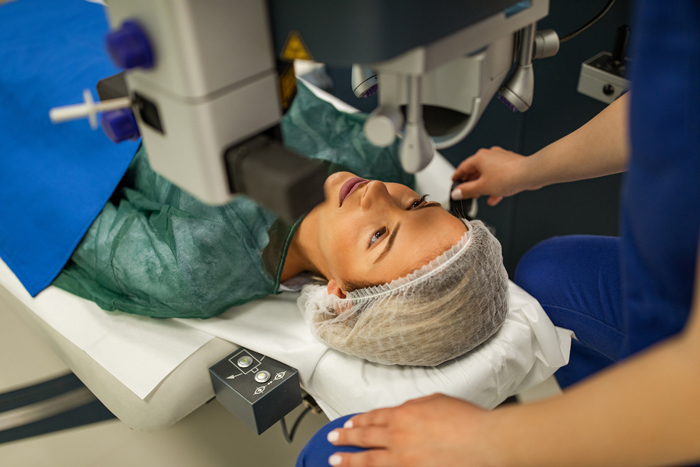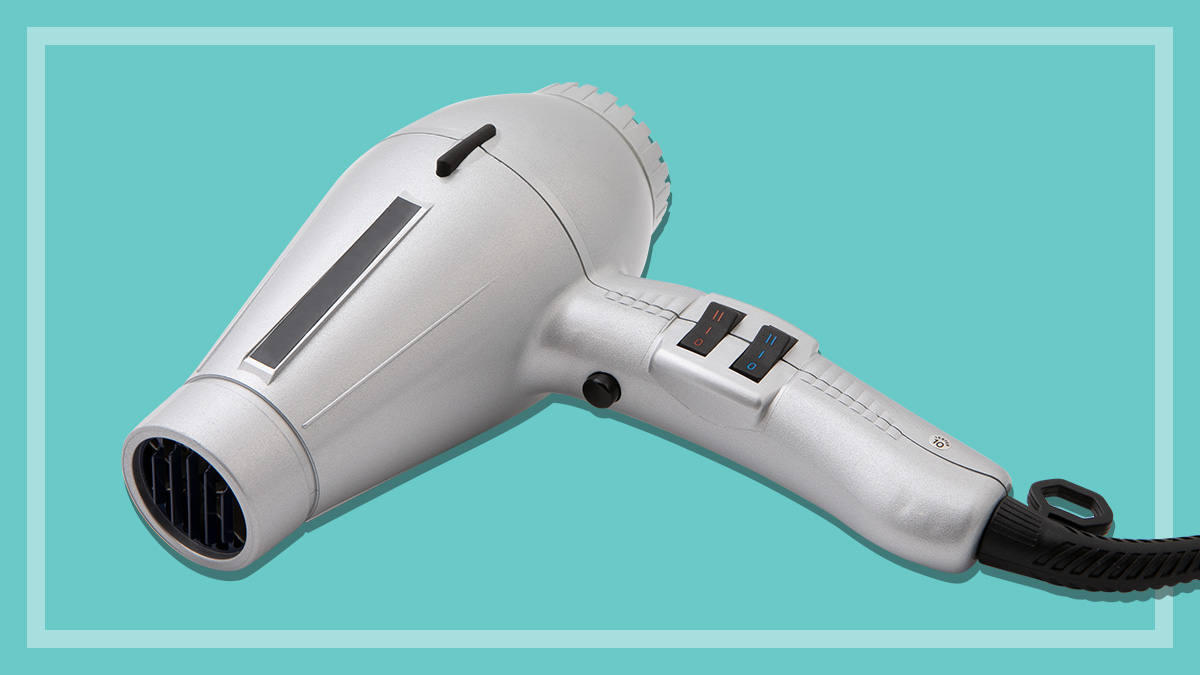Get our independent lab tests, expert reviews and honest advice.
A guide to laser eye surgery

Laser eye surgery offers (in most cases) a quick, effective and fairly pain-free solution to vision problems such as short- and long-sightedness and astigmatism. For many people with these conditions, laser eye surgery can completely remove the need to wear glasses or contact lenses.
On this page:
- Can laser eye surgery fix my vision problem?
- Techniques and technologies
- Risks and complications
- Expectations
- Intraocular lens implants
- What about presbyopia?
- Choosing a clinic
On the downside, there’s no guarantee you’ll end up completely spectacle-free, and it’ll cost you about $2500-3000 per eye. You can’t claim a Medicare benefit for it, and private health funds generally either don’t cover it, or offer only limited rebates for members with top hospital/extras cover.
We also look at other forms of eye surgery, such as intraocular lens implants. This procedure is more invasive than laser eye surgery, and also more expensive. But it’s worth considering if you’re over 40, or not a good candidate for laser eye surgery.

What is laser eye surgery?
Laser eye surgery is an irreversible procedure that will permanently alter the curvature of your cornea. There are other procedures, such as lens implants, but laser techniques are the most common.
An ophthalmologist (eye surgeon) carries out the operation, most commonly in a laser eye clinic, with a computer-controlled excimer laser that uses pulses of ultraviolet light to reshape the corneal surface – flattening it in short-sighted people, sculpting a steeper curve if you’re far-sighted, and evening out the curve to correct astigmatism.
The results are very good, and there is now data to show long-term stability
Dr Diana Conrad, director of the Royal Australian and New Zealand College of Ophthalmologists
Ophthalmologists are registered medical doctors who assess eyes, diagnose diseases, prescribe corrective devices, and carry out medical and surgical procedures. But they need no formal training specific to laser eye surgery.
Dr Diana Conrad, director of the Royal Australian and New Zealand College of Ophthalmologists, says, “Laser refractive surgery has evolved over the past 20 years to become an accepted part of mainstream eye care. The results are very good, and there is now data to show long-term stability.”
Can laser eye surgery fix my vision problem?
It depends what your vision problem is. But first it’s important to have a basic understanding of how the eye works.
In the normal eye, light rays pass through the cornea at the front of the eye and the lens behind it focuses them as a sharp image onto the retina at the back. But when the cornea or eye is misshapen, we see a distorted or blurred image (called a refractive error).
The most common errors are:
Myopia (short-sightedness)
Light rays are focused in front of the retina, leading to blurred distant vision.
Hyperopia (long-sightedness)
Light rays aren’t yet in focus when they reach the retina, leading to blurred close-up vision.
Astigmatism
This is a very common condition where the eye isn’t completely round, meaning light is focused at different points, leading to blurred or distorted vision at all distances. People can have myopia or hyperopia as well as astigmatism.
Laser eye surgery can correct varying degrees of myopia, hyperopia and astigmatism, either in one or both eyes.
Presbyopia
As we get older, the eye lens becomes stiffer, affecting our ability to focus on close objects. It usually starts in our 40s, making us need reading glasses.
Presbyopia can’t be corrected with traditional laser surgery. But there are other options – see What about presbyopia? below.
Techniques and technologies
What happens?
The surgeon cuts a tiny flap in the outer layer of the cornea so a laser can reshape the tissue underneath, then places the flap back over the treated area. The flap is either cut with a miniature scalpel (microkeratome) or created ‘bladeless’ with a fast, computer-guided femtosecond laser.
Who’s it suitable for?
This is currently the most popular procedure – your eyes should feel fairly comfortable the day after surgery, when you can probably resume normal activities. It’s the more effective option if you’re more severely short- or long-sighted.
What are the downsides?
It’s been linked to the rare condition ectasia, where the cornea bulges out because it’s been structurally weakened, resulting in poor-quality vision. There’s a small but significant additional risk of surgical complications, mostly associated with the corneal flap – it can get lost or damaged, cut incompletely or completely cut off, for example.
However, the developments in computer-guided femtosecond laser technology are designed to improve precision and make flap creation safer. The flap is also susceptible to future dislocation with a severe blow to the eye – such as from sports or accidents – though it’s very rare and usually repairable.
Surface laser treatments include PRK (photorefractive keratectomy), TransPRK (Transepithelial PRK), ASLA (advanced surface laser ablation), LASEK (laser-assisted subepithelial keratectomy).
What happens?
In surface laser treatments, rather than creating a flap, the very top corneal layer – the epithelium – is removed before it’s reshaped with a laser. In PRK and ASLA, the outer layer is usually discarded and allowed to grow back naturally. TransPRK differs from conventional PRK in that the the outer layer is removed using laser, instead of manually or with alcohol. In LASEK, the epithelium is pushed aside during the surgery and replaced afterwards to preserve more corneal tissue.
Who’s it suitable for?
PRK was the most common technique before LASIK gained popularity in the early 2000s. Surface laser treatments are particularly suitable for correcting lower degrees of short-sightedness and astigmatism, and may also be recommended if you have a very thin cornea. People whose occupation or sports place them at risk of eye contact (such as military personnel, and martial arts and contact sport participants) may also prefer surface laser treatment over LASIK to avoid potential complications with the flap.
What are the downsides?
Compared with LASIK, you’re likely to feel more discomfort, and the recovery time is longer – it takes about a week for the surface of the eye to heal, and it can be quite sore. TransPRK has a quicker recovery time than conventional PRK.
What happens?
A femtosecond laser cuts a small lens-shaped disc of tissue, called a lenticule, within the cornea. Using a fine pair of forceps, the ophthalmologist then pulls out the lenticule from the cornea through a small incision in the cornea, thereby changing the cornea’s shape. Because there is no flap, and no removal of the surface of the cornea, it is considered less invasive than LASIK or surface laser treatments, and is similar in principle to keyhole surgery.
Who’s it suitable for?
SMILE is suitable for people with myopia and astigmatism, but not those with hyperopia.
What are the downsides?
Although patients usually see well by the next day, they may have to wait a few weeks to get the maximum benefits. Otherwise, outcomes and side effects are similar to those for LASIK and surface laser treatments.
Risks and complications
Laser eye surgery for vision correction can change your life for the better. But you need to be comfortable with taking a certain amount of risk, as no medical procedure is totally risk-free and the results are irreversible.
Laser eye surgery has been done for more than 30 years now and, over that time, the complication rate has proven to be generally low. About one in 20 (five percent) patients report problems afterwards.
The most common problems occur during the first few weeks after surgery and include:
- Over- or under-correction, or residual blurry vision, which requires another ‘fine-tuning’ enhancement after three months.
- Dry eyes or an inability to produce enough tears to keep the eyes comfortable, especially after LASIK.
- Visual symptoms (especially after PRK) affecting night-driving ability, such as corneal haze, glare and/or haloes, starbursts around lights, blurry double vision or light sensitivity.
- Eye sensitivity after PRK or other surface laser treatments.
Other, less common problems include myopic regression (where eyesight changes back to its pre-surgery state), lower contrast sensitivity and less crisp vision, even with glasses or contact lenses.
Chance of infection
Complications that threaten your vision are very rare. But as with any other surgery, there’s always a slight chance of infection, especially within the first two days after surgery. It’s rare, and more common with PRK than with LASIK, but infections can lead to scarring and, in extreme cases, blindness.
The long-term effect of removing corneal tissue is unknown, but so far no studies have suggested that there’ll be complications in the long term. Most problems discovered so far occur in the first year after surgery.
Expectations
Most people will see better after laser eye surgery, but there’s no guarantee you’ll no longer need glasses or contact lenses. In fact, you’re very likely to need reading glasses anyway as you get older, as laser eye surgery won’t prevent the onset of age-related vision problems. (It won’t speed them up either, although they might become more noticeable after surgery.)
Most people will see better after laser eye surgery, but there’s no guarantee you’ll no longer need glasses or contact lenses
If you’re aware of the surgery’s limitations, as well as its potential complications and risks, and you’re still convinced it’ll improve your lifestyle, laser vision correction might well be worth the expense.
Best chance of success: light to moderate myopia
More than nine in 10 people who are lightly to moderately short-sighted achieve 6/12 vision and many 6/6 vision or better. A person with 6/12 vision – the legal requirement for driving in many Australian states – can see at six metres what a person with normal vision can see at 12. (The old term for normal vision was 20/20, which referred to feet instead of metres.)
People who are more than moderately short or long sighted can still benefit from surgery, but they might have to temper their expectations. And although astigmatism can also be treated, its type and severity will affect results.

How much does laser eye surgery cost?
The cost varies, depending on the type of procedure and the technology used. Costs range from $1300 to $3700, but are typically about $3000, per eye. SMILE is more expensive than LASIK and surface laser treatments – more than $3000 per eye.
Health fund contributions
Laser eye surgery is considered cosmetic, so don’t expect much, if anything, in the way of rebates from your private health insurer. Although many funds do cover laser eye surgery, the cover may only apply for their top hospital or extras policies, and will usually cover only a small portion of the total cost. Check with your health insurance provider first.
Medicare benefits
Medicare pays no benefit for most laser eye surgery either – only if it’s required to treat certain eye diseases. Otherwise, it’s categorised as cosmetic, as people generally have it so that they can stop wearing glasses.
Intraocular lens implants
An alternative to laser eye surgery is intraocular lens implants, where a lens is inserted into your eye, either instead of, or as well as, your natural lens. This type of surgery may be a good option for people aged over 40, as it can help correct presbyopia (the need for reading glasses). It’s also suitable for people with cataracts, whose natural, cloudy lens is replaced with an artificial lens.
The three main types of implant are:
1. Intraocular contact lens (IOL) or phakic implant
The intraocular contact lens is inserted behind your cornea and in front of your pupil, with your natural lens left in place.
2. Refractive lens exchange (RLE)
Your natural lens is replaced with a customised artificial intraocular lens, which is similar to what happens in cataract surgery. The replacement lens can be monovision or multifocal, which may reduce the need for reading glasses.
3. Corneal inlay
A tiny ring is implanted within the cornea through a hole made directly in the mid-cornea or under a LASIK-type of corneal flap. It works like a pinhole camera, increasing the depth of field so you can see near and far objects clearly. Typically, only one eye is done, so your other eye has normal vision. It’s generally recommended only for people with very good long-distance vision.
Who should consider implants?
These procedures are more invasive than laser eye surgery, and are best suited to people who are not candidates for laser procedures. Your surgeon will do one eye at a time, and allow time for it to recover before treating the second eye. There are risks, although, as with laser eye surgery, they are mostly short-lived and can be fixed with medication or further surgery.
Implants are also more expensive, and can cost about twice as much as laser eye surgery. However, if the procedure is part of cataract surgery, you’ll get a rebate from Medicare and/or private insurance.
What about presbyopia?
If reading glasses aren’t for you, there are some surgical options that can help with presbyopia.
Monovision
With monovision, you treat one eye to see near objects, and leave the other, usually your dominant eye, for distance vision. Your eyes work independently. This condition can occur naturally, or can be created with contact lenses or laser treatment. But not all people can tolerate it, so you may want to trial monovision first with contact lenses before you decide on surgery.
Conductive keratoplasty (CK)
This is a radiofrequency heat treatment to the peripheral cornea that’s less invasive than laser surgery. It can correct small degrees of long-sightedness or improve reading vision in one eye.
PresbyLASIK
A laser contours the cornea to create a multifocal effect, so it has different power zones for vision at varying distances, allowing distant and near vision. Although most (but not all) people who have it are satisfied, there are four main drawbacks: the lack of long-term follow-up studies to see how it fares over time; a relatively high rate of repeat surgery needed; the loss of vision quality; and the potential to affect lens implant options in the future.
Intraocular surgery
Intraocular surgery is the final option, although it’s both expensive and invasive, and you wouldn’t get it to correct for presbyopia alone. See Intraocular lens implants (above) for more information.
Choosing a clinic
So you’ve made the decision to explore laser eye surgery. How do you make sure you get an experienced surgeon and a good clinic?
Your GP, optometrist or ophthalmologist may be able to recommend a good clinic or a particular ophthalmic surgeon experienced in laser surgery. But you should check out more than one clinic, both to get a second opinion and to compare the services offered. Be wary of clinics that guarantee you perfect vision – it’s not something that can be guaranteed.
Checklist for choosing a laser eye surgery clinic
- If the surgeon holds a current academic position, this indicates that he or she is active in research or teaching, and is exposed to peer review.
- What’s the surgeon’s experience in correcting the type and degree of your refractive error? This question is particularly important because a surgeon needs no extra postgraduate training to do laser eye surgery.
- What’s the degree of the surgeon’s involvement both before and after the procedure? They shouldn’t see you just for the operation and leave the assessments and check-ups to assistants.
- Ask for data on their surgery outcomes. How do they track them? How do the results compare with national benchmarks?
- The clinic should tell you comprehensively about what’s going to happen on the day of the surgery and afterwards. Ask questions and read all the material you’re given.
- If you wear contact lenses, ask for how long you should avoid wearing them before the assessment.
- Does the price include check-ups and, if necessary, enhancement procedures? (These are further operations that may be necessary if the first procedure leaves the eye over- or under-corrected.)
- Accreditation to a quality standard such as ISO 9000 is an indicator that the clinic has written quality assurance procedures in place. Look for such accreditation.
- Don’t go by cost alone. Remember that the decision you make will affect you for the rest of your life.



